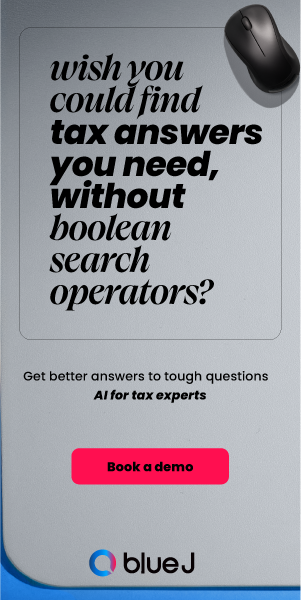The nature of taxes

Vern Krishna, FCGA, FCPA, CM, QC looks at taxation historically and in Canada
TORONTO – As with a jigsaw puzzle, we need to look at the picture on the front of the box before we start putting the pieces together. Hence, we examine the nature and meaning of taxes, the constitutional authority to levy them, the analytical framework of fiscal legislation, administrative considerations and the processes for dispute resolution. In addition, we look at the policy underpinnings of the income tax system and its role in economic and social structures.
I. The Federal Income Tax
 |
Vern Krishna, FCGA, FCPA, CM, QC is a tax lawyer with TaxChambers LLP in Toronto. |
The federal income tax is a charge that the government imposes on certain annual gains of individuals, corporations, or other taxable entities derived through labour, business, investments, and other financial dealings in accordance with the Income Tax Act (Canada) (“Act”). We tend to think about income tax law solely as a numbers exercise and a source of revenues to finance public expenditures. To be sure, revenue generation is the most significant purpose of the income tax law, but it is not its only purpose. Indeed, we can, and do, generate revenues from many other taxes such as, sales, consumption, and the “sin” taxes. Income tax also plays an important role in the development of public and political policies. Witness the number of tax promises made by all the political parties in the 2019 federal election.
Historically, taxes had considerable religious meaning and were a fundamental part of ancient Greece, and the Roman Empire. We can see the religious aspect of taxation in the Brancacci Chapel in Florence, where the fresco Rendering of the Tribute Money depicts the gods approving the Florentine income tax.
Modern income tax systems are less religious but no less zealous. Most tax systems were introduced to finance revolutions and wars. The Boston Tea Party, for example, was essentially a revolution against Great Britain’s Stamp Tax on everything from tea to legal documents. Early tax levies were often referred to as “stamp duties” as in, for example, the hat stamp tax. The American revolution gave birth to the phrase “No taxation without representation," which is incorporated in the Westminster parliamentary system of Canadian tax law.[1] The Canadian income tax statute was enacted in 1917 to finance the First World War and, indeed, was even called the Income War Tax Act.
However, income tax law has evolved beyond wars, and is now also concerned with social, economic, and political objectives. Income redistribution has become one of the dominant themes of tax legislation. Witness the debate in the United States in the lead up to the 2020 Presidential election.
Tax law is behavioral finance. Tax rules are used to invoke behavioural responses from taxpayers to respond to incentives and sanctions. For example, there are special tax rules to encourage Canadian culture and films [see: section 125.5], discourage investments in foreign magazines [subsection 19(1)], encourage digital subscriptions [see: section 118.02] and promote gender equality. The February 27, 2018 Federal Budget of 362 pages mentioned women 358 times.
Ultimately, taxpayers and tax administrators must be capable of understanding the law if they are expected to comply with it. This is not an easy task and has substantial deadweight financial costs in the form of administrative compliance and dispute resolution. The multiple purposes served by, and responses to, income tax law contribute to its complexity. As we pass through into the second century of the Canadian income tax system, it is useful to compare the size of the original statute of 11 pages with the current version of the Act of approximately 3,000 pages. The 2018 Budget alone extended to 362 pages, with a vast volume of technical amendments.
Since income tax is the appropriation of private property for public purposes, it inevitably creates friction between taxpayers, who want to minimize their taxes, and legislators, who seek new ways to curb “tax leakage.” The tension results in prolonged and costly litigation. There is no alternative dispute resolution process in tax law. Middle income taxpayers have limited access to justice.
Income tax law has a reputation of being a difficult and dry subject. To be sure, tax law is difficult, but it is neither dry nor unpleasant. Yes, tax law is replete with difficult and obtuse language. Even Albert Einstein, conceded: “The hardest thing in the world to understand is the Income Tax.” Nevertheless, taxpayers must live with the statute as it is, and not with the one that they wish the legislators had written. Indeed, the most terrifying statements issued by politicians is when they say they want to “simplify” the tax system.
We must comply with the law or face severe sanctions. Advisors advise, litigators litigate, and judges adjudicate, on uncertain, changing, complex, and poorly drafted provisions. Tax litigation is long and expensive process beyond the financial resources of middle-income taxpayers, who bear the greatest burden of raising tax revenues.
II. What is a “Tax”
What do we understand by the term “tax”? The term “tax” derives from the Latin verb “taxare” meaning “to touch repeatedly”, which is exactly what taxes do – they touch us repeatedly in every facet of our lives. There is a difference in law, however, between “taxes” and “levies.” The meaning of “tax” is important because of constitutional restraints on provincial powers to tax.
The Act does not formally define either “income” or “tax”. We have developed the legal meaning of these terms through various interpretations in the case law. Although there are several sources that define “tax” in various contexts, their common theme is that taxes are an enforced contribution that a state levies by virtue of its sovereignty to support its operations and public needs. Legislatures sometimes describe taxes as “charges”, “exactions”, or “duties”. However, the common element of all taxes is that they are mandatory and coercive.2 They “operate in invitum – against an unwilling person.[3]
A “tax” is a compulsory charge that the government imposes upon on taxpayers. However, there are also special types of levies, such as tariffs and duties, which have the same economic effect as taxes. A tariff describes a specific tax that is usually imposed upon specific imported goods and are imposed to protect domestic industries by making imports more expensive. For example, a province may impose a tariff on goods imported from another province in Canada. A duty is a tax upon all goods that a country imports from other nations. Ultimately, all taxes, tariffs and duties have economic consequences. However, the power to levy tax is subject to constitutional restrictions.[4]
The Canadian Constitution (1867) divides the authority to impose taxes between the federal and provincial governments. The federal parliament has the power to raise money by any mode or system of taxation. In contrast, the provinces can impose income taxes only through direct taxation within the province, and then only for raising revenue for provincial purposes. Thus, it is important for constitutional reasons to identify whether a levy is a tax, tariff, duty, user fee, license, or penalty and on whom the burden falls.[5]
III. The Difference Between Taxes and Other Levies
The distinctions between taxes, penalties, tariffs, duties, fees and licenses can be subtle, and it is important to look beyond the label attached to levies to determine their meaning. Since all taxes are painful, politicians often soften their blow by attaching gentler names to lessen the pain. For example, in 1996 Premier Dalton McGuinty of Ontario introduced the Fair Share Health Care Levy (FSHCL) and in 2004, a health care “premium.” Both the levy and the premium were in substance “taxes”. Similarly, “Employment Insurance” is not insurance but a payroll tax, which goes into the government’s general revenues and funds many non-employment related expenditures.
Similarly, the United States enacted the Patient Protection and Affordable Care Act (2012) (known as “Obama Care”) as “health insurance.” The mandate required most Americans to maintain “minimum essential” health insurance coverage [26 U. S. C. §5000A]. Individuals had to pay a “penalty” to the Internal Revenue Service if they did not obtain coverage. Indeed, the Patient Protection and Affordable Care Act even described the “shared responsibility payment” as a “penalty.”
The essential constitutional question in Obama Care was whether the Federal Government of the United States could order people to buy insurance, and subject them to a penalty if they did not do The United States Supreme Court held that the Federal Government did not have the power to order people to buy health insurance, and the relevant provision of the Internal Revenue Code would be unconstitutional if read as a command. However, the Federal Government did have the power to impose a tax on those without health insurance. Hence, the relevant provision was constitutional, because in substance it was a tax and not a penalty.
Although, the statutory label of a levy can be important for political purposes, it is irrelevant in determining the legal character of the levy. Exactions may not be taxes even when labeled as such and be taxes when not so labeled. One must look past the label of the exaction to its pith and substance to determine its character.
IV. Taxes and Penalties
Taxes raise revenues for public expenditures by attaching to an event – for example, earning income, buying goods and services, or engaging in an activity. Taxpayers do not generally receive specific measurable benefits from their taxes. A tax is simply an enforced contribution pursuant to constitutional legislative authority to raise revenue for public purposes, and not as a payment for some special benefit or service. Taxpayers do, however, indirectly derive benefits from government services – such as, national defense, health care, public schools, judicial services, and public roads, etc.
In contrast, a penalty is a punitive sanction for doing something that is considered harmful and, in most cases, requires the actor to have knowledge of the wrongful act. To be sure, both taxes and penalties affect conduct, but they do so in different ways. Tax provisions are often used for purposes other than to raise revenue. For example, taxes on cigarettes not only raise substantial revenues for governments but are also intended to encourage people to give up smoking for health reasons. In contrast, governments use liquor taxes primarily to raise revenues, but without excessive concern for health.
Thus, every tax is in some measure regulatory in that it poses an economic impediment to the activity taxed, as compared with others that are not taxed. In contrast, penalties imply punishment for an unlawful act or omission – such as, for example, failure to pay income taxes when due, make false statements on tax returns, secure a motor vehicle permit, or a dog licence.
V. Tariffs
In economic terms, tariffs are essentially taxes under a different name. They are taxes imposed at the border upon specific imported goods and are intended to protect domestic industries and revenues by making imports more expensive. As with all taxes, tariffs have economic consequences for consumers, who generally end up paying more for the goods. Tariffs can also trigger trade wars as, for example, the dispute between the United States, Canada, the European Union and China in 2018 (and continuing) under President Trump’s administration.
However, governments can also use tariffs within a country to protect certain industries. Canadian tariffs are purportedly improper within Canada. Section 121 of the Constitution Act (1867) specifically prohibits the use of tariffs on goods flowing between provinces:
“All Articles of the Growth, Produce, or Manufacture of any one of the Provinces shall, from and after the Union, be admitted free into each of the other Provinces.”
However, the Constitution is what the Supreme Court interprets it to be at any particular time.
For example, in R. v. Comeau, 2018 SCC 15, the Supreme Court held that the words “admitted free” in section 121 do not mean absolute free trade across Canada. The decision involved the constitutional status of a New Brunswick liquor law that imposed a fine on persons importing more than a stipulated quantity of liquor or beer purchased from any Canadian source other than the New Brunswick Liquor Corporation. The taxpayer imported more than stipulated amount and was fined. He argued that the fine contravened section 121’s prohibition against tariffs.
The Supreme Court considered the words “admitted free” to be ambiguous! Instead, they interpreted the words on the basis of the historical, legislative and constitutional contexts of Canadian federalism. Although section 121 prohibits governments from levying tariffs or tarifflike measures, the Court ruled that it does not prohibit governments from adopting laws and regulatory schemes directed to other goals that have incidental effects on the passage of goods across provincial borders. Provinces can impose tariffs that enable proactive policies for the good of their citizens and in a way that maintains an appropriate balance between federal and provincial powers. The Court said:
“The need to maintain balance embodied in the federalism principle supports an interpretation of s. 121 that prohibits laws directed at curtailing the passage of goods over interprovincial borders but allows legislatures to pass laws to achieve other goals within their powers, even though the laws may have the incidental effect of impeding the passage of goods over interprovincial borders.”
The Court found that the New Brunswick statutory prohibition was not intended to impede trade, but rather to restrict access to any non-corporation liquor, not just liquor brought in from another province: “The objective of the New Brunswick regulatory scheme is not to restrict trade across a provincial boundary, but to enable public supervision of the production, movement, sale, and use of alcohol within New Brunswick.”
The Court did not consider that the primary purpose of the prohibition wasto protect the province’s tax base. Instead, the Supreme Court interpreted the section 121 prohibition against internal tariffs in the context of the provincial power to levy direct taxes. The prohibition against internal provincial tariffs is subject to other provincial powers to tax. Hence, section 92 takes primacy over the prohibition in section 121.
Given the ease with which a province can dress up its legislation to serve provincial purposes, Comeau undermines the economic underpinnings of the constitutional prohibition against tariffs on goods, produce, or manufacture between Canadian provinces. A tariff is a tax by any other name. The Supreme Court was less concerned with the economics of tariff barriers than the political power of the provinces in the Federation of Canada.
1 The Westminster system is a parliamentary system of government modelled after that which developed in the United Kingdom. The term comes from the Palace of Westminster, the seat of the British Parliament. The system is a series of procedures for operating a legislature.
2 Re Eurig Estate, [1998] 2 S.C.R. 565, [2000] 1 C.T.C. 284 (S.C.C.).
3 Meriwether v. Garrett, 102 U.S. 472, 514 (1880).
4 See generally: J. H. Perry, Taxes, tariffs, & subsidies: A history of Canadian fiscal development (1955).
5 BLACK’S LAW DICTIONARY: “A charge, usu. Monetary, imposed by the government on persons, entities, transactions, or property to yield public revenue.” See, generally: Thomas M. Cooley, The Law of Taxation 62 (Clark A. Nichols ed., 4th ed. 1924). Cooley was a professor at the University of Michigan and served as Chief Justice of the Supreme Court of Michigan.
Vern Krishna, FCGA, FCPA, CM, QC is a tax lawyer with TaxChambers LLP in Toronto. Photo by The New York Public Library on Unsplash.










(0) Comments